Trends in Canada's meat market: pork exports soaring, but locals opt for poultry
Canada’s meat consumption forecasts and export trends
Canadians have been reducing their beef and pork intake over the last two decades. Poultry consumption, on the other hand, is on the rise. Different factors are giving rise to this trend, including health and environmental concerns. According to data from The Organisation for Economic Co-operation and Development (OECD), two decades ago, the average Canadian consumed 22.5 kg of beef annually (based on retail weight). This is down to 17.58 kg annually in 2020 and the trend is forecast to continue to just 16.02 kg in 2029. Per capita consumption of pork was 22.80 kg annually in 2001, 15.88 kg in 2020, and is forecast to be 15.33 kg in 2029. Per capita poultry consumption is on the rise and increased from 30.89 kg per year in 2001 to 35.53 kg in 2020, and is forecast to be 37.55 kg in 2029. Mutton is still a fairly minor industry with Canadians eating around 1 kg per person per year, and little could change over the next decade. Canada’s population was 38.6 million in 2020 and could grow to 43.4 million in 2029, according to Statistics Canada.
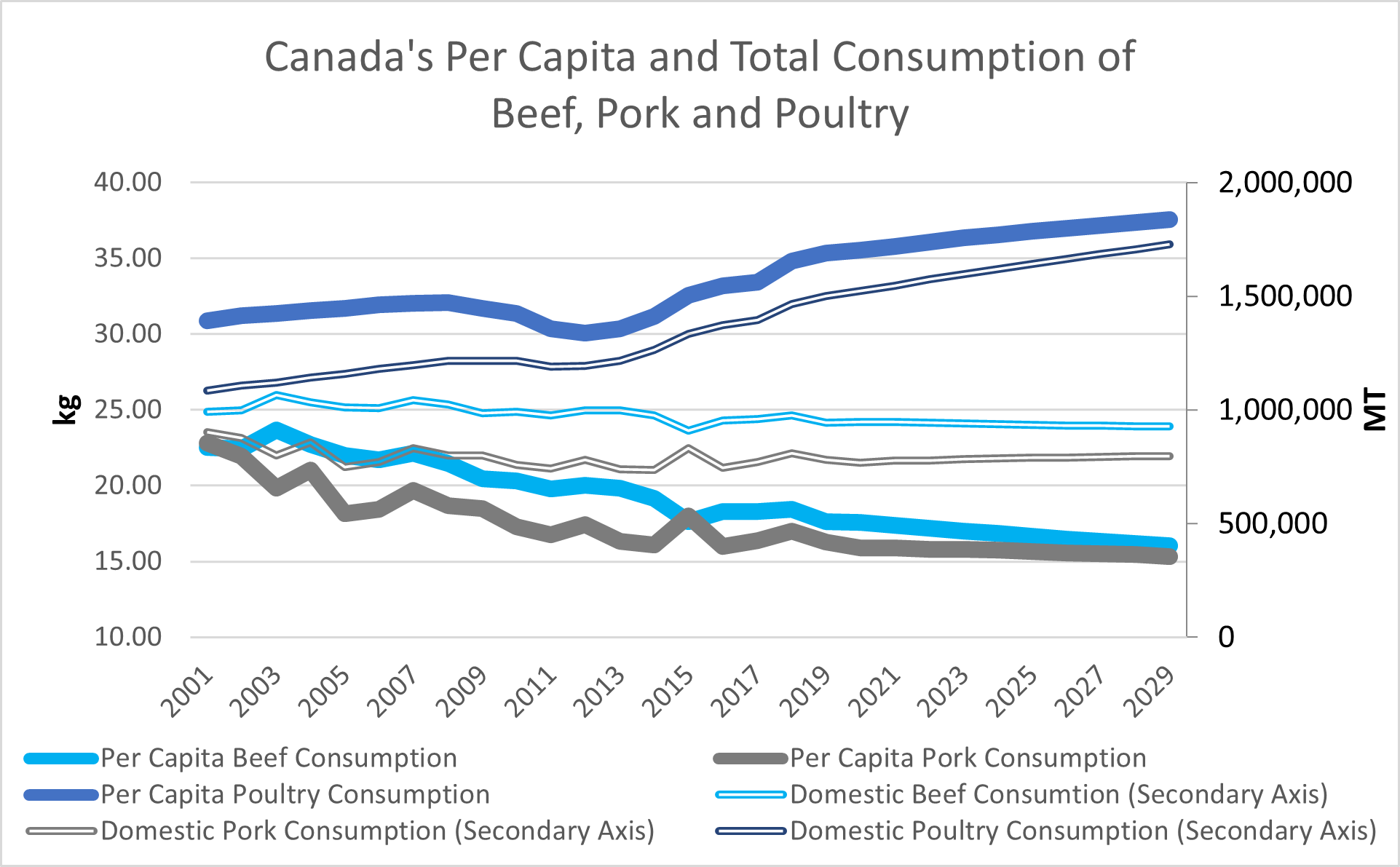
Source: OECD
While the per capita reduction in beef and pork consumption is softened to some extent by the growing population, the export industry is the beneficiary of these changing patterns. The export of pork, in particular, has been making steady gains. Pork exports were valued at a mighty USD 3.2 billion in 2020, compared to USD 2.6 billion in 2019. Since consumption of beef and pork should change little over the next decade, the export industry should continue expanding over the next 10 years.
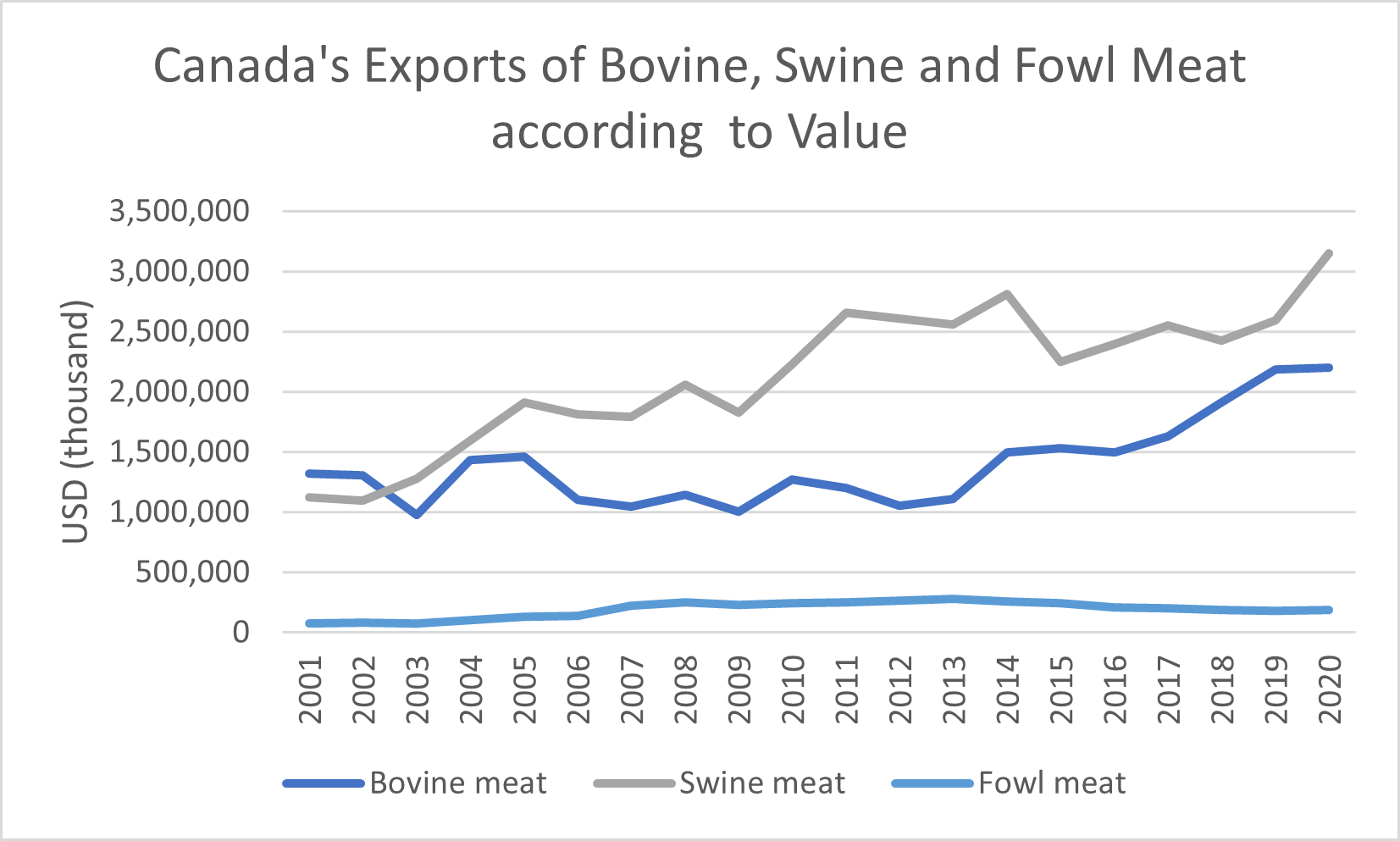
Source: ITC Trade Map
Beef production, consumption, and trade
Canada has consistently been a top exporter of beef. Production has been more than 1 million tons for more than 25 years. In 2020, Canada produced a massive 1.39 million MT but it was lower than the record 1.50 million MT in 2004. Nearly half of the beef produced in Canada is exported (49% in 2020) in 62 countries. The US is by far the biggest export destination, with 72% of the total export volume. As beef production increases and consumption decreases, a larger portion of Canadian beef is expected to be exported over the next decade.
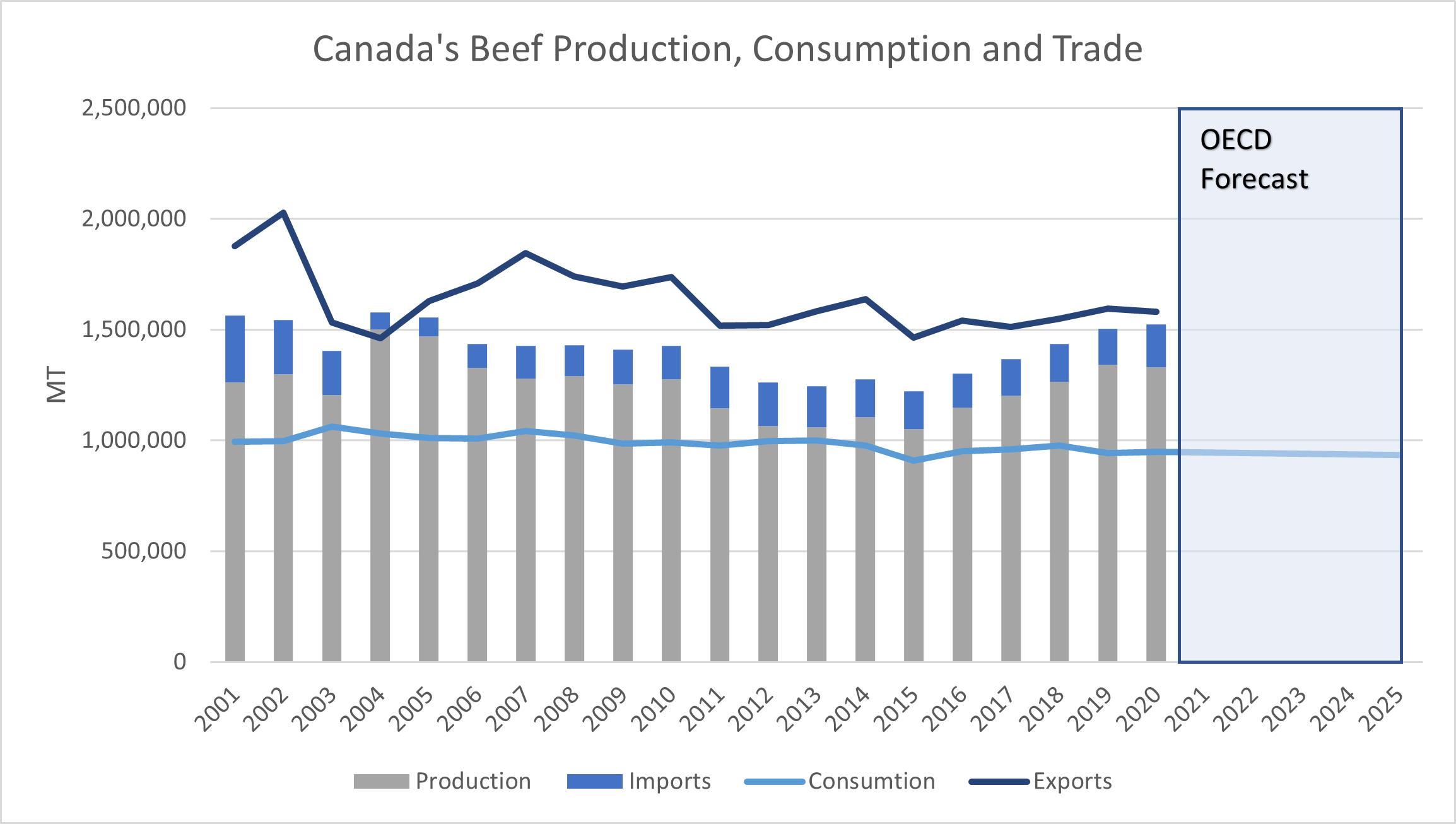
Source: Statistics Canada, ITC Trade Map, OECD
*Imports and exports include live cattle (converted to carcass weight) and other bovine animals
Pork production, consumption, and trade
Although there haven’t been any fireworks in the pork production industry up to 2020, it has grown steadily over the last two decades. Exports increased in correlation with production, and the steady growth culminated in record exports in 2020 when China bought all the pork it could get its hands on. Exports in 2020 were a massive 1.19 million MT, up 23% from 2019, and more than the previous record of 980,654 MT that was exported in 2017. Canada further exported 5.31 million live hogs, up 4% from a year before.
Despite Canada’s population growth, consumption has been flat since the mid-2000s. Pork consumption is expected to remain fairly constant over the next decade, trending between 776,00 and 797,000 MT according to forecasts by the OECD. The export industry will likely expand even further due to increased production and fairly consistent consumption.
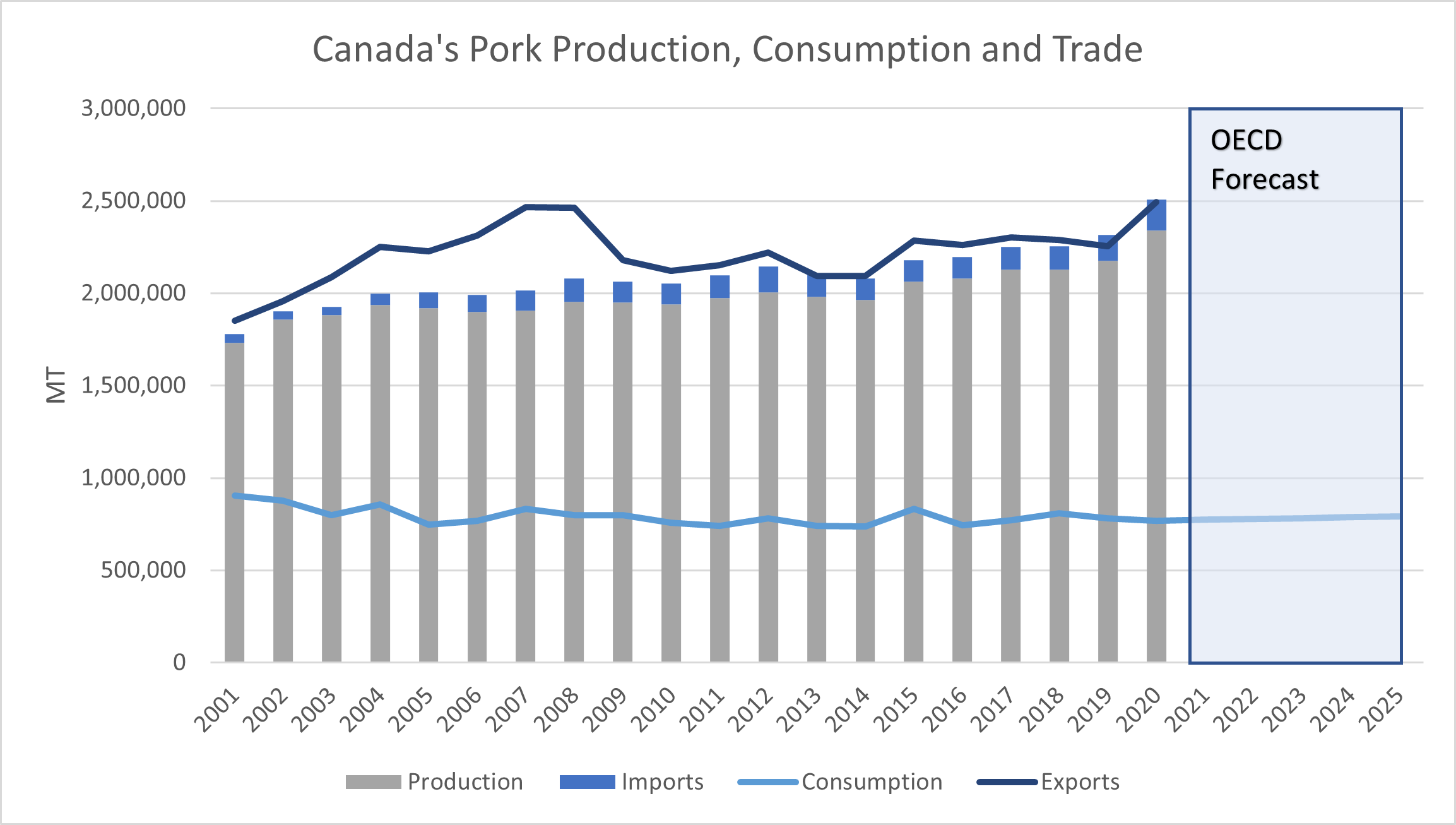
Source: Statistics Canada, ITC Trade Map, OECD
*Imports and exports include live pigs (converted to carcass weight) and other swine
Record pork exports in 2020, the first half of 2021 keeping up the pace
While the constant growth in pork production and the fairly consistent domestic consumption were the main reasons for the record exports in 2020, the catalyst was China’s sudden demand for pork. Swine fever was detected in 2018, leading to significant cullings and price increases. China imported a record 4.3 million MT of pork in 2020, way higher than the 1.9 million MT in 2019. Canada supplied 410,539 MT of this, compared to the 172,170 MT exported to China in 2019. After these record imports by China, their demand has slowed in 2021, as the pig herd recovers and prices are retreating. Canada’s pork exports on the other hand are persistently strong. Even though monthly exports dropped below the levels of 2020 since April, it is far higher than the 5-year average. In fact, exports from January to July were 673,054 MT, only slightly lower than the 693,516 MT exported in 2020 over the same period, but much higher than the 588,081 MT 5-year average for the first 7 months. These higher exports are despite exports to China returning to normal since March. Demand is coming from all over, most notably Mexico and the Philippines.
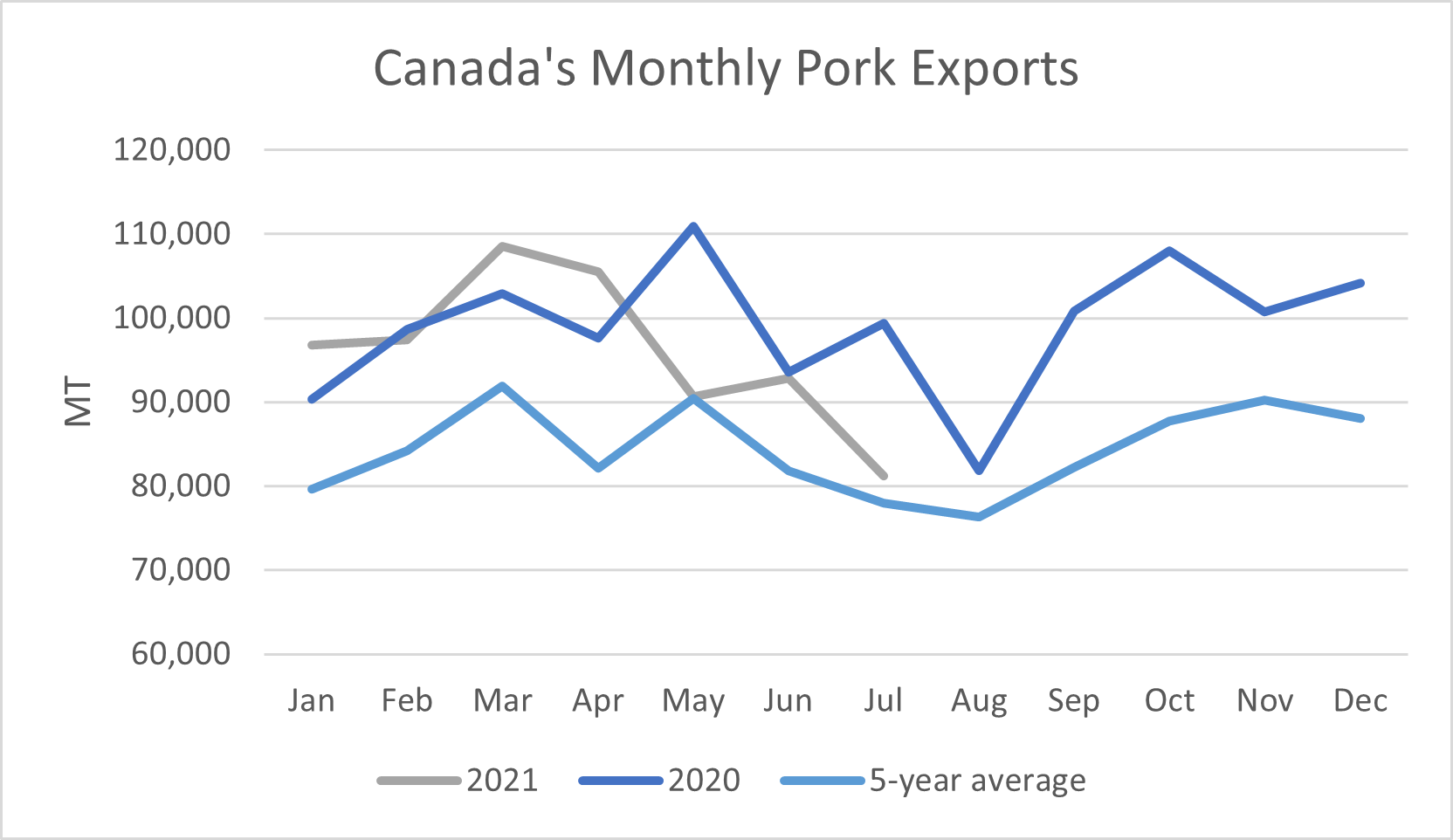
Source: ITC Trade Map
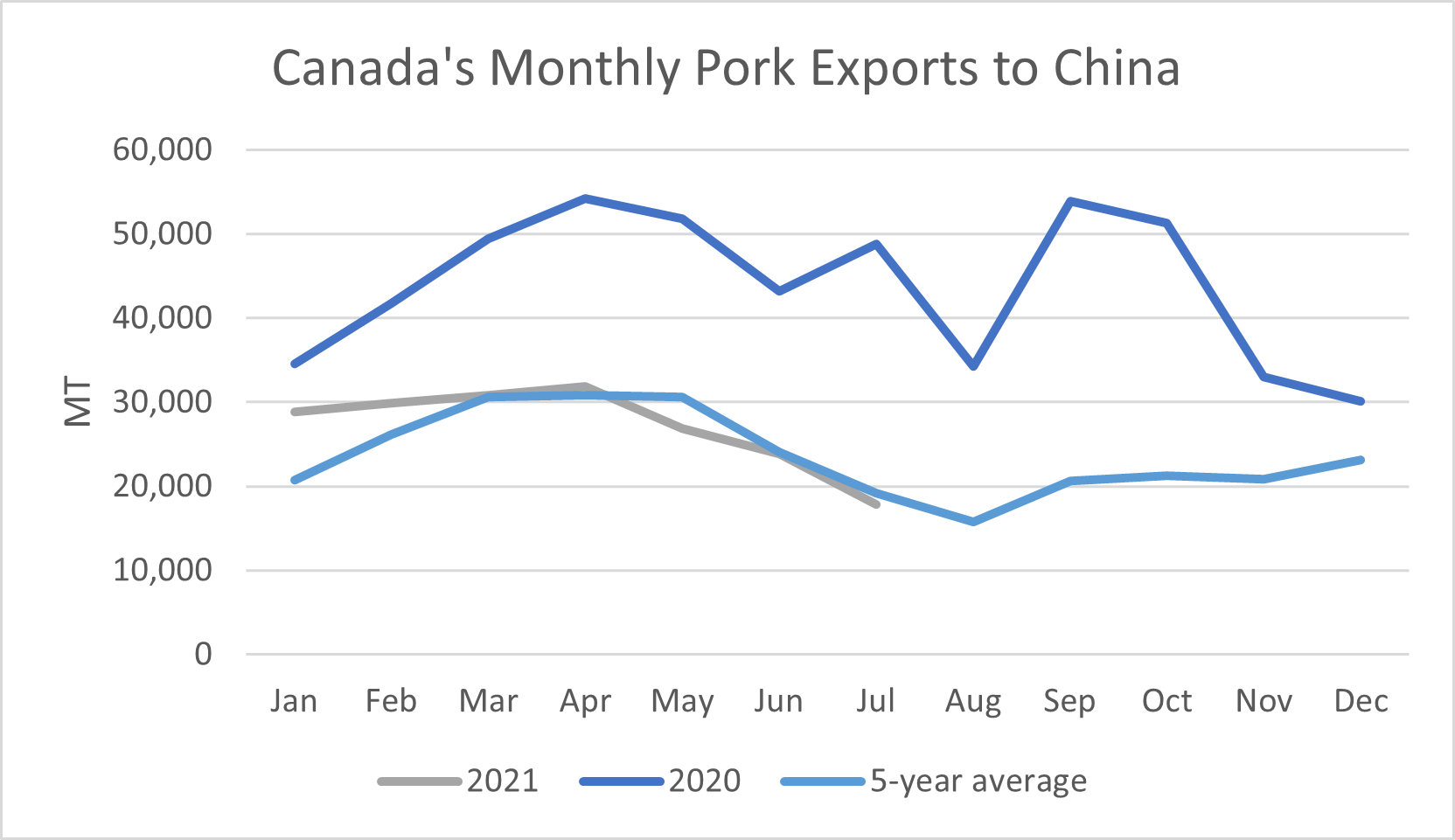
Source: ITC Trade Map
Poultry production, consumption, and trade
As poultry consumption increases, both per capita and as a whole, domestic production is keeping up with demand. Annual per capita consumption jumped from 33.3 kg in 2001 to 35.8 kg in 2021, and is forecast to continue to 37.6 kg in 2029. While domestic consumption is by far the main driving force, exports play a minor role. There is some cross-border trade between the US and Canada and some exports to the Philippines and Taiwan among others, but exports take up only 8% of total production. Looking ahead, demand for poultry will keep increasing, from 1.52 million MT in 2021 to 1.73 million MT in 2029, meaning production capacity and efficiency will need to expand in unison.
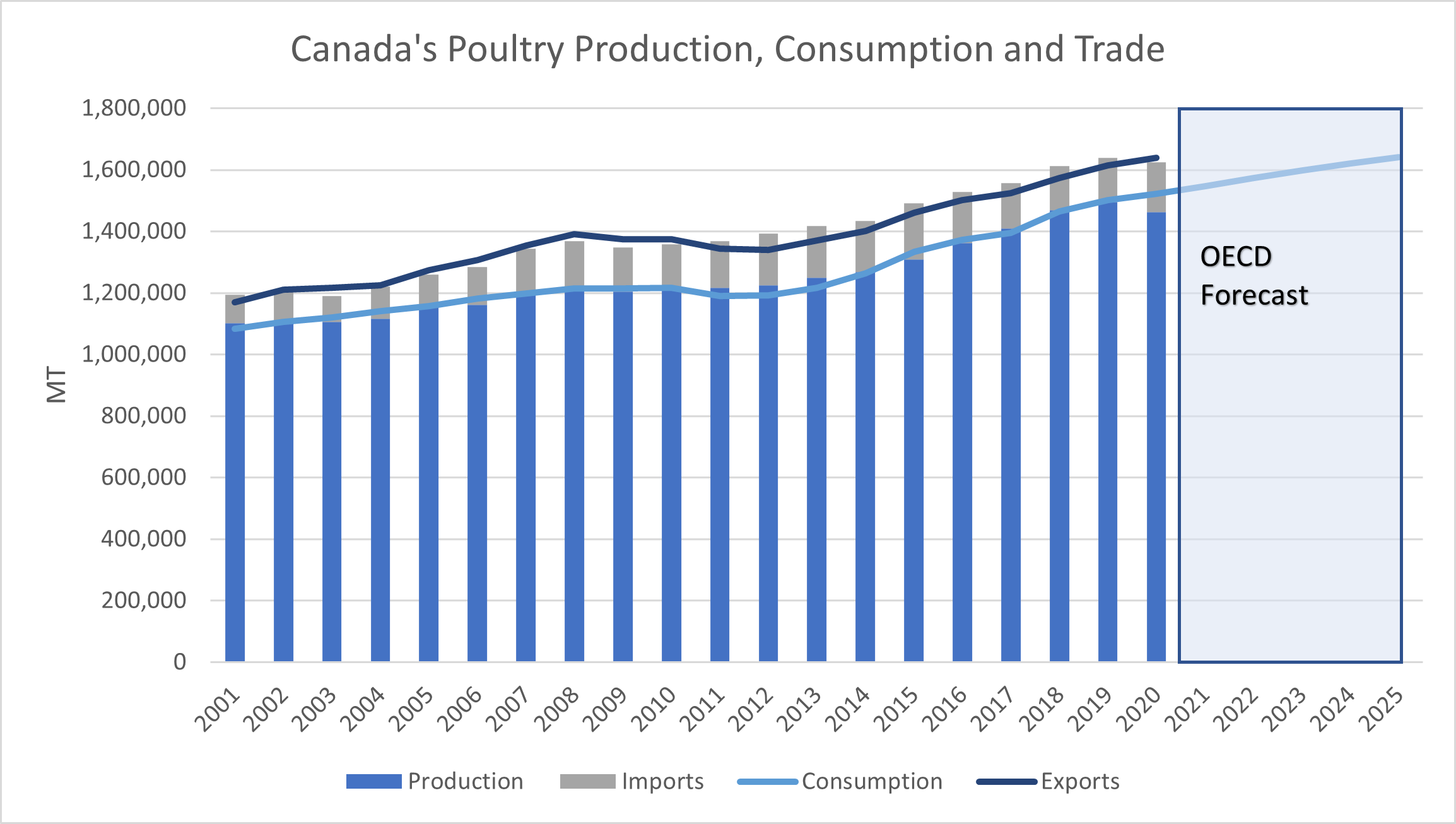
Source: Statistics Canada, ITC Trade Map, OECD
*Imports and exports include duck, geese, turkeys, and guinea fowls
Sources:
The Canadian Cattlemen Association: Industry Stats
OECD: Meat Consumption
The Pigsite: Chinese Pork Imports are slowing
Statistics Canada: Data Tables
